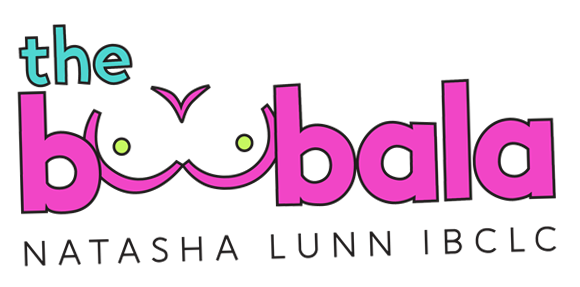Page Content
- What happens to your boobs if you don’t breastfeed?
- What happens to your breasts when you stop breastfeeding?
- Do wifes breasts stay big after breastfeeding?
- Can your breast get smaller after breastfeeding?
- How to keep your breasts from shrinking after breastfeeding?
- How long does it take for breast milk to dry up?
- How can I regain my breast fat after breastfeeding?
- Where does the milk go when you stop breastfeeding?
- Why am I flat chested after breastfeeding?
- What happens to your body after you stop breastfeeding?
Understanding Breast Changes After Breastfeeding
The journey of motherhood brings with it a myriad of physical changes, particularly concerning breast size and shape. Many women wonder whether their breasts will get smaller after breastfeeding, and the answer is nuanced, involving a combination of biological factors and individual experiences.
Breast Size Dynamics During and After Breastfeeding
During pregnancy and breastfeeding, breasts undergo significant transformations. The primary reason for this is the increase in milk-producing tissue, which can make breasts feel fuller and larger. This change is largely due to the accumulation of glandular tissue and fat, which is essential for milk production. However, once breastfeeding ceases, the body begins to revert to its pre-pregnancy state.
As the milk-making cells die off, the breast tissue undergoes a transformation. This process can lead to a reduction in size, often described as a “deflated” appearance. Many women report that their breasts may appear lopsided initially, but this asymmetry typically resolves over time.
Factors Influencing Post-Breastfeeding Size
It’s important to note that the extent to which breasts shrink after breastfeeding can vary widely among individuals. Factors such as genetics, age, and overall body composition play significant roles. For instance, as women approach menopause, hormonal changes, particularly the decrease in estrogen, can lead to a reduction in breast fat and size, regardless of breastfeeding history.
Moreover, the connective tissue in the breasts can become stretched during pregnancy and breastfeeding. This stretching can contribute to sagging or drooping, which may give the impression of smaller breasts even if the actual volume has not decreased significantly.
The Long-Term Outlook
In many cases, after the initial post-breastfeeding adjustments, breasts may return to a size and shape that is similar to what they were before pregnancy, albeit with some differences such as stretch marks or a slightly lower position. While some women may find their breasts are indeed smaller, others may experience little change in size, though the texture and firmness may differ.
Ultimately, the experience is highly personal. Some women embrace the changes as a natural part of motherhood, while others may seek ways to enhance their breast appearance post-breastfeeding. Regardless of the outcome, understanding these changes can help women navigate their post-pregnancy bodies with confidence and acceptance.
What happens to your boobs if you don’t breastfeed?
You may have some milk leak from your breasts, and your breasts may feel sore and swollen. This is called engorgement. It usually gets better after several days. Over time, your body will stop making milk if you don’t breastfeed or pump.
What happens to your breasts when you stop breastfeeding?
After your baby has stopped breastfeeding, you might have lumpy breasts for 5-10 days. A sore lump might indicate localised breast inflammation or the beginnings of mastitis. If this happens, try gently stroking your breast towards your armpit or expressing a small amount of milk. This might reduce the lumpiness.
Do wifes breasts stay big after breastfeeding?
It’s possible for one breast to return to its pre-pregnancy size while the other stays larger, droops, or flattens more. Some women end up with one breast a full cup size smaller or larger than the other after breastfeeding and simply learn to love the body that nourished their babies — no matter what its shape.
Can your breast get smaller after breastfeeding?
Change #3: Your Breasts Will Shrink
(Relief!) Instead, they may simply appear smaller. “This is because the skin is a bit more stretched and the connective tissue and fatty tissue in the breasts can shift during pregnancy and breastfeeding,” she says.
How to keep your breasts from shrinking after breastfeeding?
How do you keep your breasts from sagging post-delivery?
- Wear a supportive bra.
- Feed on demand.
- Stay hydrated.
- Maintain an optimal weight.
- Exercise and eat healthy.
- Go slow with weaning.
- Adopt good posture.
- Take cold showers.
How long does it take for breast milk to dry up?
It may take several days or weeks for your breasts to completely stop making milk. Breast fullness should decrease in 1-3 days. You may feel emotional during this time. Be sure to take care of yourself.
How can I regain my breast fat after breastfeeding?
Wean gradually – when you are ready to plan to wean, leave time to do it gradually. The more gradually you wean, the more you will help the fat tissue to redeposit inside breasts. That will help them regain their pre-pregnancy appearance more quickly.
Where does the milk go when you stop breastfeeding?
Where does the milk go if I don’t pump it out? The milk in your breasts, if not removed, will gradually reabsorb and diminish.
Why am I flat chested after breastfeeding?
It is common to experience sagging, drooping or a “deflated” appearance. Some women describe their breasts as “pancake-shaped.” This happens because lactation creates a different, denser tissue in the breasts. Once you are no longer breastfeeding, your natural breast tissues may permanently shift.
What happens to your body after you stop breastfeeding?
Some might experience headaches or migraines, while others feel exhausted or even dizzy immediately after weaning. Another common post-weaning issue? Acne. Big hormone changes can really throw your body for a loop.

